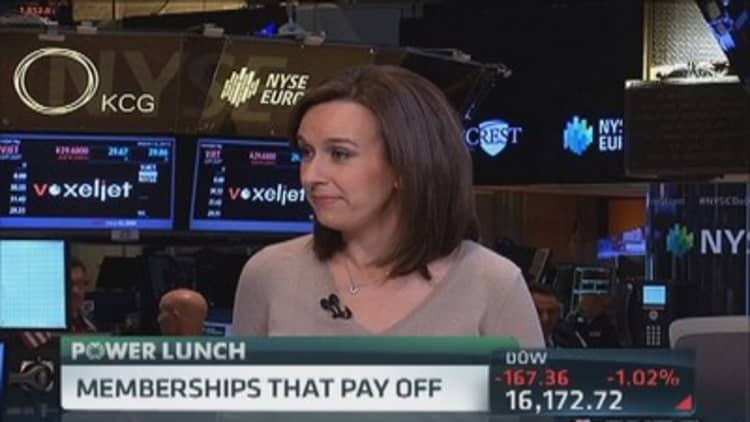Amazon has made an announcement that rivals may be tempted to celebrate: It's charging customers more money.
The e-commerce company said Thursday it will raise the annual price of its Prime membership to $99 from $79, the first such hike since the program was introduced nine years ago. Prime's key benefit is free two-day shipping on millions of items available on Amazon's website.
At first blush, Amazon might appear to be trying to boost its bottom line. Assuming the company has at least 20 million Prime customers, the price hike would generate over $400 million in additional revenue and a similar benefit to operating income, given there won't be many additional costs. That's welcome, considering analysts only expect this year's operating profit to be $2.8 billion, a mere 3.2 percent of sales.
(Read more: New Amazon Prime feemakes shoppers do the math )
And Amazon does appear to be taking a risk. Only 58 percent of Prime customers said they would "definitely" or "probably" renew the service if the price increased by $20 per year, according to a survey by Eric Sheridan, an analyst at UBS.
But it's unlikely Amazon is ready to start cashing in on its customer base at the expense of top-line growth. Even if every Prime customer stays on board and the cash drops to its bottom line, the company would still be trading at well above 100 times forward earnings. That's not the sort of multiple awarded to companies that passively watch revenue growth cool.
More likely, Amazon plans to pile the proceeds from the price hike into projects that will make Prime even more attractive.
(Read more: Amazon plans music streaming service)
Michael Pachter, an analyst with Wedbush Securities, said there are plenty of ways Amazon could invest, like offering more movie titles on the Prime video-streaming service or expanding the regions where one-day free delivery is available.
That's bad news for Amazon rivals, from Best Buy to Wal-Mart, which will probably continue to watch the e-commerce company offer deals that carry little or no profit margin. Unlike Amazon, such companies tend to be judged based on profit rather than revenue, meaning it's nearly impossible to compete on price.
(Read more: Can Instagram save this teen retailer?)
And Amazon will probably continue to take market share from other sectors, like grocery shopping. While Amazon has offered fresh food delivery that comes with high transportation costs, it's unthinkable for many low-margin grocery chains to offer competing services. Kroger, for instance, has an operating margin of less than 3 percent. But with only single-digit sales growth, investors are squarely focused on its profits.

Amazon, meanwhile, continues to post revenue growth of around 20 percent. While that's down from sales growth above 40 percent in 2011, analysts don't expect much of a slowdown in the next several years.
Amazon is not without risks. China's Alibaba, for instance, could expand into the U.S. and put the American giant under pressure.
Even then, it could be a while before Amazon investors start demanding higher profits. In the meantime, competing U.S. retailers are unlikely to get a break.
—By CNBC's John Jannarone. Follow John on Twitter @jannarone.


